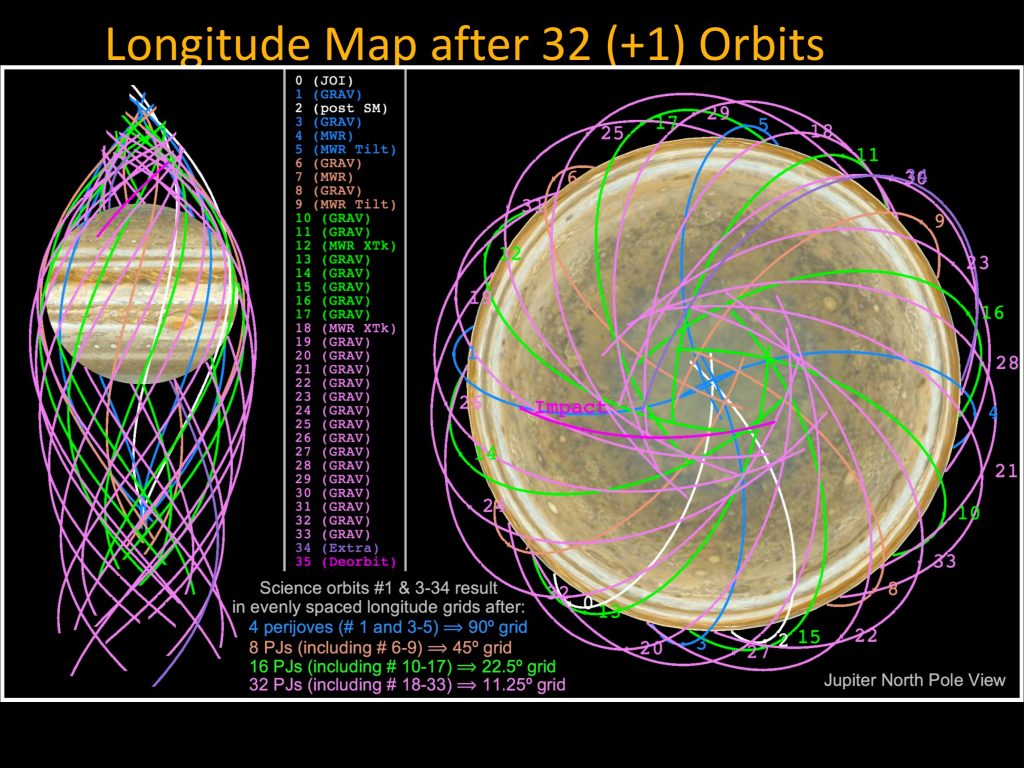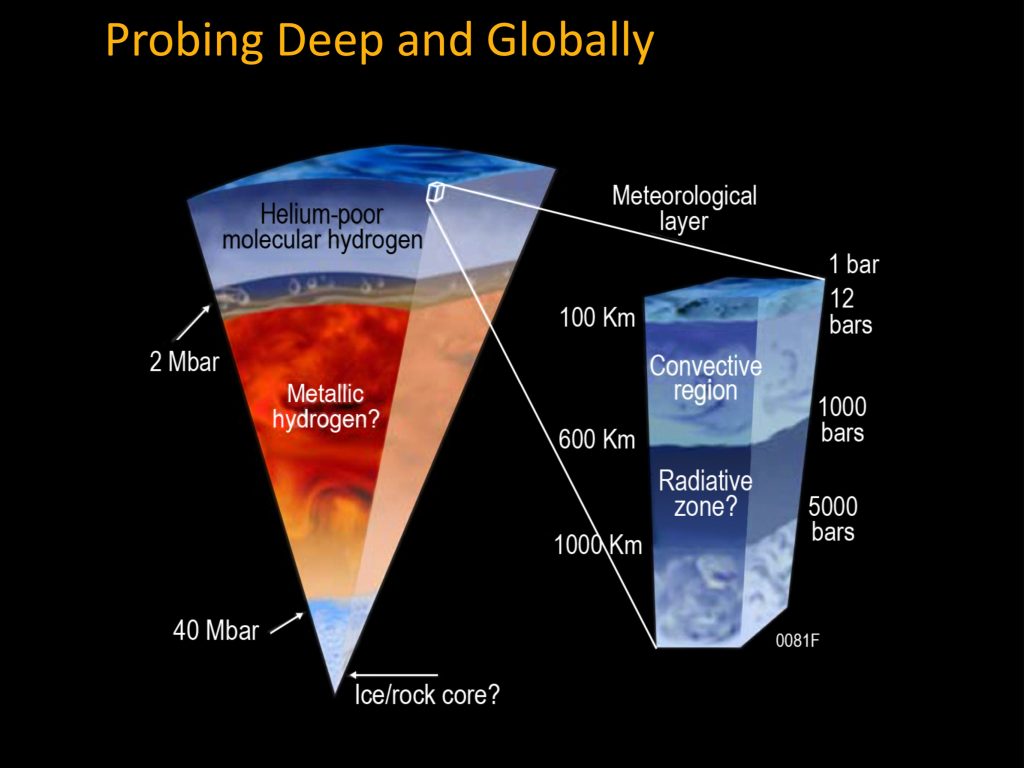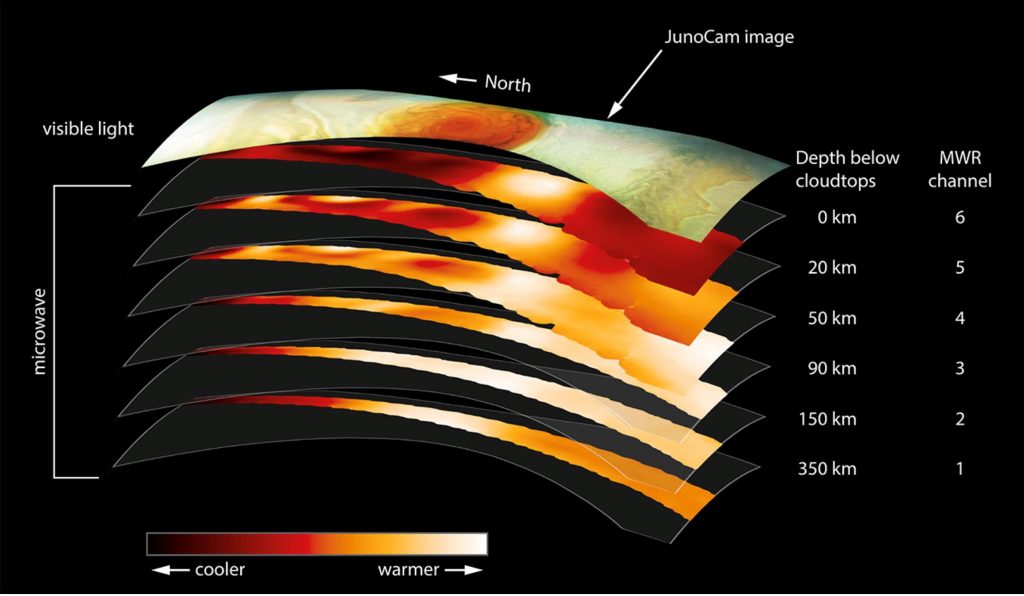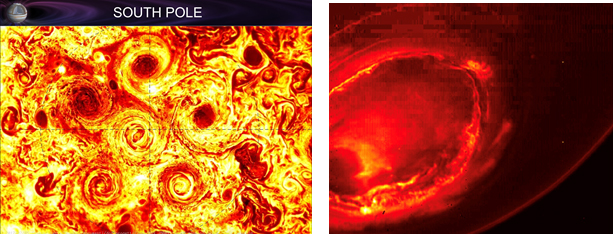Juno Science Update
By Laurie Averill
Based on July 2019 Webinar with updates from press releases by the Juno Team and Scott Bolton, Southwest Research Institute and Principal Investigator for the Juno Mission
Juno launched on August 5, 2011, went around the Sun out past Mars and came back around Earth for a gravity assist so that it could travel with more speed to Jupiter. The spacecraft reached Jupiter on July 4, 2016, where it sped up with respect to the Sun, but slowed compared to Jupiter transitioning from a solar to a Jovian orbit. Juno now orbits the Sun as a Jovian satellite.
New discoveries are made during each flyby when the 50 foot wide
Juno spacecraft cartwheels twice per minute at 125,000 – 150,00 mph around
Jupiter. She travels from the north pole
to the south pole in two hours, crossing the poles at every longitude. On April 10, 2020, the 25th of the 32 orbits
will begin. During the earlier, closer
passes the scientific analysis focused on the equatorial regions, the more
recent, more distant passes focuses on the poles.

The goals of the Juno mission are to investigate Jupiter’s interior structure, atmosphere, magnetosphere measuring gravity fields, magnetic fields, visual light, infrared light, microwaves, plasma waves, to make better inferences about its formation and its role in the formation of our solar system.

To understand Jupiter’s internal structure, its gravity field has been very carefully and precisely measured to find out if there is a core, its size, and its composition. Because the core had to be present at the formation of the planet—it could not be added later–it can provide information about the conditions of the proto-planetary nebula and what started the formation of Jupiter. The gravity science and magnetosphere readings indicate that at the center of the planet at a pressure of 40 megabars is an ice/rock core of not-yet-known composition. Around this center beginning at 2 megabars of pressure is an internal sea of liquid hydrogen that behaves like molten metal. It is unlike anything that has yet been discovered and is not possible to replicate in a lab on Earth due to the extreme pressure. The metallic hydrogen is considered a possible source of Jupiter’s magnetic field. This two-part core makes up more half the size of Jupiter.
Above the core is a helium-poor hydrogen region and then the atmosphere. To determine the composition of the atmosphere, Juno uses the Microwave Instrument (MRW) with six different instruments that detect radio transmissions in microwaves of different frequencies to see through the levels. The instrument measures temperature and opacity or transparency of the clouds at the specific spots and at specific frequencies. The more ammonia or water, the more opaque it is and the less deeply into the atmosphere can be seen. Because it is known how opaque water and ammonia are at different temperatures, it is possible to determine the make-up of the atmosphere by correlating readings of opacity and temperature. Jupiter’s clouds are made up of water closer to the core, then ammonia and sulfide, and at the highest level, ammonia. The MRW peels the onion of Jupiter’s atmosphere. Here is a depiction of the changing levels at the Red Spot. Note that the storms are colder than the surrounding areas.

Juno has mapped the north and south poles of Jupiter and observed aurora from directly above. Cyclones encircle the poles in changing pentagonal and hexagonal structures around a central cyclone.

Raw visual-light data from the Juno Cam is available at https://www.missionjuno.swri.edu/junocam/processing for citizen scientists, photographers, and artists to process images.
